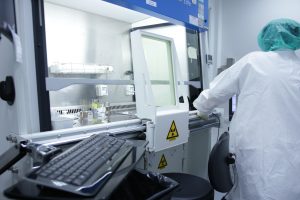What Is Medical Device Development
Medical device development involves all stages from the conception of a product to releasing it in the market. The product may be an advanced x-ray machine, CT-Scan, MRI or any other medical device. Launching a medical device is not an easy job. It involves the formation of an optimally operating instrument followed by layers of regulations to be considered.
Need Of A New Medical Device
The need or demand of a new medical device may be for an entirely new way of diagnosing diseases or examining patients that are not available before. It may also be due to the up-gradation of the present equipment to get better and more reliable results or make things easier for health care providers and patients.
Stages Of Medical Device Development
The exact procedure differs from place to place according to the regulatory law applied in the specific country. It also depends upon what type of device is under consideration. Generally, the whole process can be divided into five stages for design control and obtaining an effective and safe device for use:
- Initiation and risk analysis
- Concept formulation and feasibility
- Design development and validation
- Product launch
- Post-launch assessment
There is strict regulation for the approval of medical devices to be launched in the market for public use to ensure the user is at no risk while under examination of these devices.

Duration Of Medical Device Development
The time required in the complete development of a medical device depends on the type of device. According to the FDA, there are three classes of devices.
Class 1
These are the devices that are quickest to get into the market. Electric toothbrushes and oxygen masks are examples that are included in this class. The approval procedure completes usually within one week.
Class 2
This class comprises 43% of the devices and have a moderate risk factor. These devices have an average time of three to six month to get approved. The anesthesiology devices take the longest time while the toxicology devices are approved more quickly.
Class 3
Almost 10% of the devices belong to this class and are of the high-risk level. These devices include defibrillators, implanted prostheses and cochlear implants. It can take eight months to a year to approve this equipment as there is a more strict system of checking and evaluation for these devices.
Medical Device Development Services
Many companies offer services if you want to launch or develop any medical device. You can get guidance and professional help in all the stages of device development.
Medical Devices Regulation
The medical device regulation is a mechanism to evaluate the significant risk factors involved in using medical devices. These regulations aim to identify problems timely and correct them appropriately. Every region of the world has its regulatory authorities. As such, the European Union has its laws for medical devices regulated in Europe, which is very broad. The regulations usually cannot quickly and easily be understood. It’s something that takes some time to learn, analyse and prepare for.
The upgraded text of regulatory laws has parts involving more scrutiny of technical documentation and product safety and performance assessment. It has brought stricter checking of clinical evaluation and post-market clinical follow-up procedures. This regulation also ensures better traceability of devices through the supply chain system and distribution. Before diving into the device development process, it is vital to fully understand all the related regulations and implement them correctly. In this way it is ensured that the product is heading into the right direction from a regulatory point of view.
